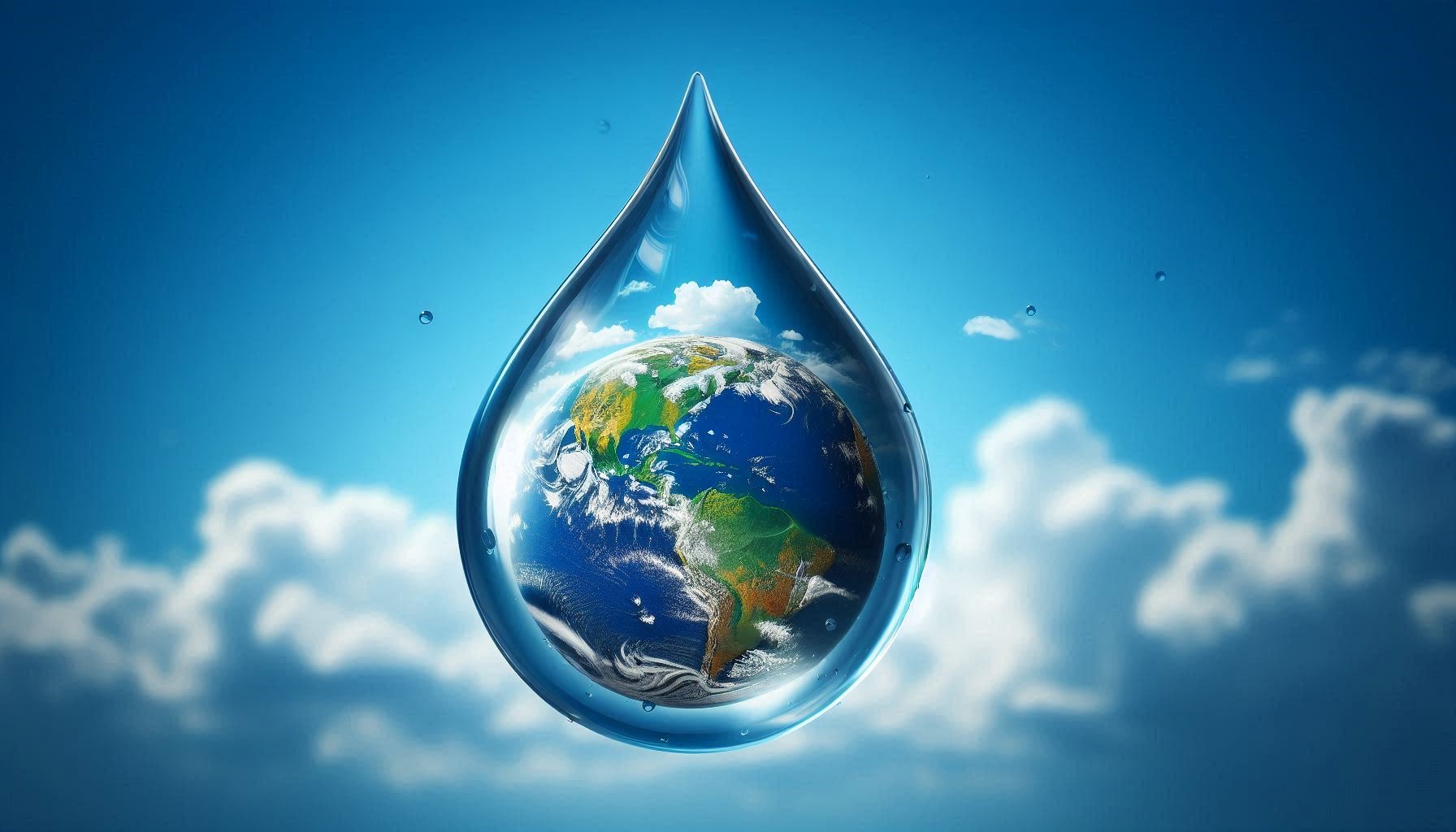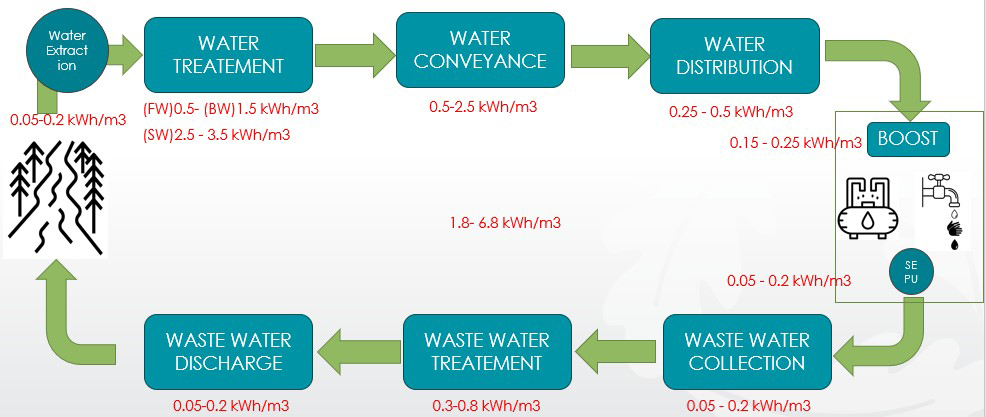Does saving water reduce my carbon footprint?

Would you be surprised to learn that the water you use in your home generates more carbon emissions than the car you drive?
Well, it’s probably true.
The water consumed by a typical UK household emits 2.6 tonnes of carbon a year – one and half times more than a typical car driving the UK annual average of 7,600 miles1.
If this is news to you, you’re not alone.
We may all now be far more aware of how things like the energy we use, travel, or the food we eat contribute to our carbon footprint. But very few people understand how the process of creating fresh water – and the way we subsequently use it – generates substantial carbon emissions.
We all need to learn to value water and better understand how using less of it helps reduce the impact of climate change.
In this article we take a closer look at how water contributes to our carbon footprint, how we can all take some simple steps to reduce water consumption, and the impact this could have on the planet – and our pockets.
What is a carbon footprint?
A carbon footprint is the amount of carbon dioxide (CO2) emitted as a result of the consumption of fossil fuels by an individual, organisation or household.
The term CO2e is often used, which means ‘Carbon Dioxide equivalent’ – a way of describing different greenhouse gases in an interchangeable way.
How does using water contribute to my carbon footprint?
According to sustainability experts, Dar, every cubic metre of water we use generates a carbon footprint of 10.4kg of CO2e.
So, to arrive at the 2.6 tonnes of carbon a year mentioned at the start of this article, you simply take the average daily water consumption of a four-person home including leakage (0.58 cubic metres), multiply this by 365 days and then by 10.4kg.
Of course, the water carbon footprint of large businesses is usually far higher, since businesses can be colossal consumers of water. More on this later.
The carbon emitted by water use is high because the process of creating clean drinking water (from extraction, distribution, all the way through to discharge) is extremely energy intensive.

Another major contributor to water’s carbon footprint is the energy used to heat water for washing, cleaning and drinking. Most measures of water’s carbon emissions, including Dar’s methodology, usually assume that 20% of water used in a home is heated.
How can I lower my water carbon footprint?
Using less water means using less carbon. So it makes sense to be smart about the water you use at home and work. There are two main ways to do this: spotting & stopping water leaks; and being more water-wise. The good news is that doing either means you’re not only helping the planet, but also making significant cash savings too.
Let’s look first at spotting and stopping leaks. Every day, we waste an incredible 3,000,000,000 (yes, 3 billion!) litres of drinking water through leakage in England and Wales alone.
While water companies need to tackle the water leakage taking place in the mains pipes, 30% of all water is lost ‘beyond the stopcock’—in our homes and businesses—and it is far easier to detect and prevent this.
We’ve created a step-by-step guide to help you find water leaks in your property.
Another option is to use a system like Watergate. This has several advantages, including:
- It can detect abnormal water flows which indicate a leak even when you’re not able to see them.
- This might include leaks that are concealed behind walls, easy-to-miss leaks like those commonly found in toilets, and even tiny pinhole leaks.
- It can automatically shut off your water supply to prevent a leak becoming an expensive flood.
- It can give you additional insights into your water use that you can act on.
Being more water-wise means taking steps to reduce your daily water consumption. That might mean making small simple changes, like turning the tap off when you brush your teeth, taking slightly shorter showers, or installing water-efficient fittings such as low-flow taps or dual flush toilets. There are many excellent resources available to help, including from Waterwise and our very own tips on how to save water at home. We have also put together specific tips for saving water in your business.
What carbon savings might I see from saving water?
Just by making small changes to the way you use water, a four person household can expect to reduce water consumption by around 15%, bringing your water carbon footprint down by 330kg/year.
Combine those behavioural changes with using a system like Watergate and you’re looking at a water consumption reduction of 25%, lowering CO2e emissions by 661kg/year. This is because you’ll be reducing leakage and also benefiting from water insights that will make your water saving efforts even more fruitful.
In a larger business context, where far more water is typically consumed, these benefits quickly scale. For example, an average UK hotel (with 87 rooms) could save 73 tonnes of CO2e per year using Watergate.
Monetary savings
In addition to reducing emissions, you can also benefit from significant monetary savings.
If you’re in the 60% of UK homes (and 100% of businesses) that are metered then you will see water utility bill savings. Again, using a system like Watergate brings additional benefits. As well as water bill savings you could also see insurance bill savings (a reduced risk of a leak = lower premium and excess), and energy bill savings (less wasted hot water = lower heating bills).
Each house and business is, of course, different, but to give you a guide for potential carbon and money savings from reducing your water consumption with Watergate, we’ve crunched the numbers and put together this handy guide.
| Total Annual savings using Watergate to reduce water consumption | Annual CO2e carbon savings using Watergate (metric tonnes) | |
| Typical four person household | £342 | 0.66 mt |
| Hotel with 87 rooms | £28,915 | 73.4 mt |
| Restaurant or bar | £3,774 | 10.5 mt |
| Coffee shop | £1,222 | 3.3 mt |
| Build To Rent (100 houses) | £22,395 | 51.3 mt |
| Student accommodation (100 apartments) | £6,662 | 9.6 mt |
If you’re a business and you’d like to get a personalised estimate of the water, financial and carbon savings you could make please Contact Watergate.
Hopefully this article has helped you get a better understanding of how water contributes to all of our carbon footprints, and steps we can easily take to reduce water consumption. Water companies have a huge role to play in processing water more carbon efficiently, but we all have a part to play. Taking action today is good for the planet, and good for your pocket.
- Based on 145L of water used per person per day (CCW) – see water carbon calculations above for a typical four person house. A UK petrol car driving the annual average 7,600 miles generates 1,749 kg per year. ↩︎
